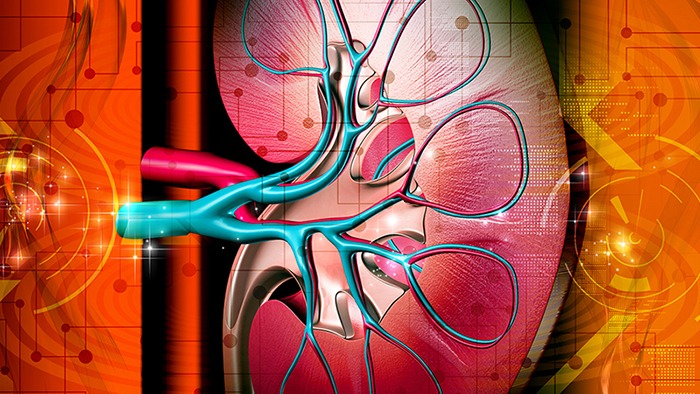What is sodium deficiency?
Sodium is an essential mineral that plays a crucial role in maintaining the body’s fluid balance and ensuring proper functioning. Sodium is soluble in water and conducts electricity when dissolved.
The body needs sodium to regulate fluid levels and to prevent dehydration. Sodium enters the body through the consumption of foods and drinks, and the first step of processing occurs in the kidneys, where excess sodium is filtered and eliminated from the body through urine and sweat.
Sodium deficiency, also known as hyponatremia, occurs when the levels of sodium in the blood are lower compared to other fluids. Sodium depletion can happen if the fluid balance in the body becomes too high or too low, which can be caused by conditions such as diarrhea, vomiting, or dehydration.

Low sodium levels in the blood may not cause noticeable symptoms, but in some cases, it can lead to mental changes, headache, fatigue, muscle spasms, nausea, vomiting, and even epileptic seizures. To diagnose sodium deficiency, a blood test is performed to determine the sodium levels in the blood.
The treatment for sodium deficiency involves treating both the symptoms and the underlying cause and typically includes intravenous fluids and electrolyte replacement.
How much sodium should be taken daily?
The recommended daily intake of sodium varies based on factors such as age, sex, pregnancy, and other conditions. For healthy adults, the upper limit of daily sodium intake is 2.3 grams or 2300 milligrams, which is equivalent to about one tablespoon of salt per day.
What are the symptoms of sodium deficiency?
Symptoms of sodium deficiency can vary depending on how rapidly the levels are declining. In some cases, if the levels are falling slowly, no symptoms may be present. If levels fall rapidly, symptoms can include weakness, fatigue, headache, indistinct speech, heart palpitations, nausea, vomiting, muscle cramps, delusions, irritability, and in severe cases, brain swelling, epileptic seizures, coma, or even death.
If you experience symptoms of sodium deficiency, it’s important to consult with a healthcare professional to determine the cause and receive proper treatment.
When Should I See a Doctor?
If you have been experiencing symptoms such as dehydration, vomiting, or diarrhea for an extended period, you should see a doctor. This is because these symptoms can lead to a rapid reduction in sodium levels, which is a medical emergency.
A rapid drop in sodium levels can cause problems like unconsciousness, epilepsy, and coma.
What can cause sodium deficiency?
Many factors can cause a deficiency of sodium in the blood. Losing water and electrolytes can also lead to low sodium levels. Sodium deficiency can also be a symptom of certain diseases, including:
- Severe vomiting and diarrhea
- Taking certain medications, such as antidepressants and pain relievers
- Taking diuretic medications
- Drinking too much water while exercising (this is rare)
- Dehydration
- Kidney disease or kidney failure
- Liver diseases
- Heart problems, such as congestive heart failure
- Adrenal gland disorders, such as Addison’s disease, which affects the ability of the adrenal gland to balance sodium, potassium, and body water
- Hypothyroidism (underactive thyroid)
- Primary polydipsia, where you feel extremely thirsty and drink large amounts of fluids
- Syndrome of inappropriate antidiuretic hormone (SIADH), which causes the body to retain fluid
- Diabetes insipidus, a rare condition in which the body does not produce antidiuretic hormone
- Cushing’s syndrome, which causes an increase in cortisol hormone levels.
When Does the Risk of Sodium Deficiency Increase?
Some factors that increase your risk of low sodium levels include:
- Getting older
- Taking diuretic drugs
- Taking antidepressants
- Being a high-performance athlete
- Living in a hot climate
- Eating a low-sodium diet
- Having heart failure
- Having kidney disease.
- If you are at high risk of low sodium levels, you should be careful about your water and electrolyte intake.
How Can Sodium Deficiency Be Prevented?
Deficiency in sodium can be prevented by maintaining the balance of water and electrolytes in the body. Women should drink 2.2 liters and men should drink 3 liters of fluid per day. When you are adequately hydrated, your urine is pale yellow or clear and you do not feel thirsty. You should increase the amount of fluid you drink in the following situations:
- The weather is hot
- You are at high altitudes
- You are pregnant or lactating
- You feel nauseous
- You have diarrhea
- You have a fever.
How is Sodium Deficiency Diagnosed?
Doctors use the patient’s medical history to determine the cause of sodium deficiency in the body.
The symptoms of low sodium levels in the blood can vary from person to person, so the best way to confirm the diagnosis is by measuring the sodium levels in the blood with a blood test.
Identifying the cause of this issue is even more complicated. To do so, doctors consider the patient’s circumstances, such as any medications they are taking or any other disorders or diseases they may have. They perform blood and urine tests to measure the amount of fluid in the body, blood coagulation, and urine content.
If the blood sodium level is low, but the urine sodium level is high, it means that too much sodium is being excreted from the body. If both the blood and urine sodium levels are low, it means that the body is not getting enough sodium or there may be an excessive amount of water in the body.
Treatment of Sodium Deficiency
How do you raise your sodium level?
Treatment for sodium depletion depends on its cause and may include:
- Discontinuing sources that consume excess water in the body. In most cases, the kidneys will automatically correct the sodium abnormality. If the patient has coma or epilepsy, highly concentrated intravenous sodium (3% saline) may be necessary to bring the low sodium levels back to normal within 24 hours.
- Decreasing fluid consumption. If sodium depletion is caused by excessive water consumption, reducing fluid intake may increase sodium levels.
- Adjusting the dose of diuretics (drugs used for high blood pressure).
- Taking medications to relieve symptoms such as headache, nausea, and epilepsy.
- Treating internal conditions.
- Injecting sodium solution intravenously (IV). Sometimes, people are given sodium solution intravenously or diuretics to help remove excess fluid from the body. In some cases, both are given together gradually over a few days.
Which diseases are caused by sodium deficiency in the body?
Effects on the Brain:
Sodium deficiency occurs when the body excretes too much sodium or retains too much water. Sodium regulates the movement of water in and out of cells. When sodium levels are low, water accumulates in the brain and causes swelling in body tissues, including the brain. This swelling can lead to:
- Disorientation
- Nausea
- Muscle cramps
Effects on the Body:
Low sodium levels can cause swelling, redness, and burning in other parts of the body, such as digestive inflammation and muscle inflammation. This can lead to:
- Nausea
- Muscle cramps
- Eye twitching
- Low blood pressure
Low blood pressure, which is caused by decreased blood volume due to water loss from cells, can prevent the body from receiving essential nutrients and oxygen, leading to organ damage. Low blood pressure can cause:
- Fatigue
- Lack of energy
Stroke:
Severe sodium depletion can cause a stroke by increasing brain swelling, which can increase pressure in the skull. This can cause headaches, but if the swelling is severe or if not treated promptly, it can lead to a stroke. Inadequate oxygen and nutrient supply to the internal organs can also cause damage and lead to stroke.

